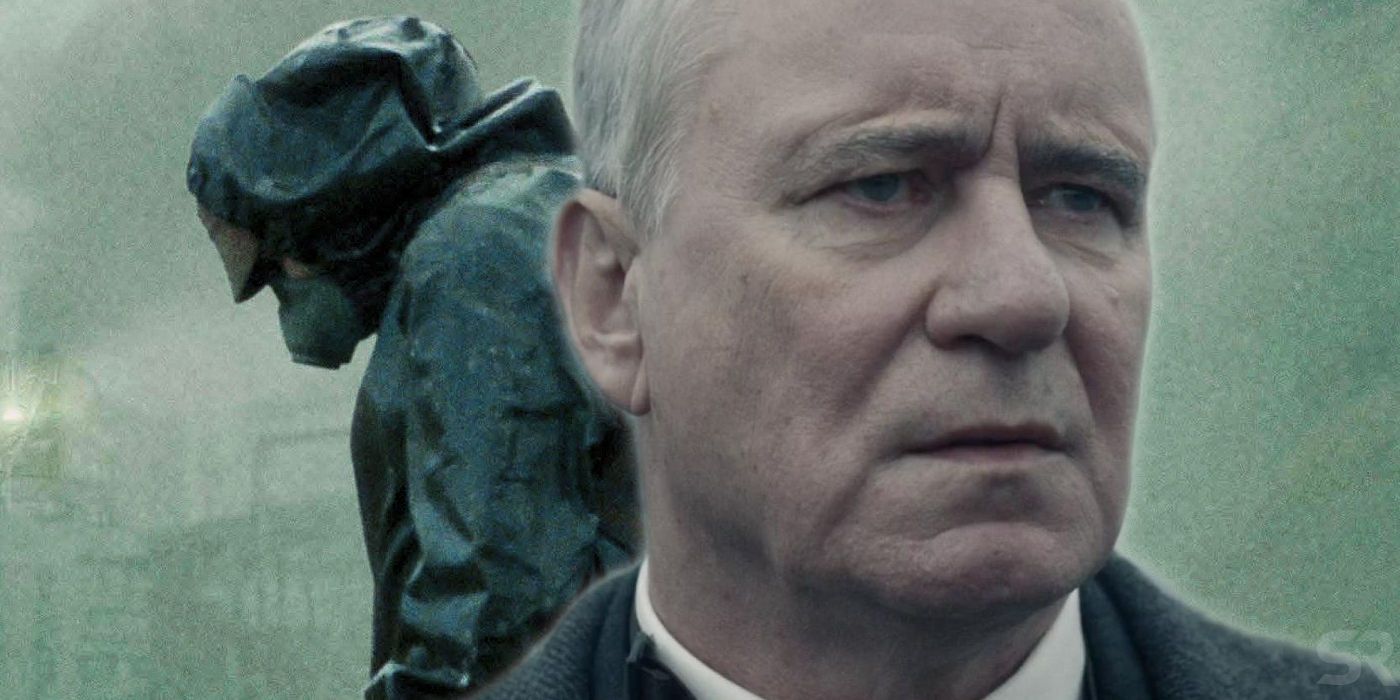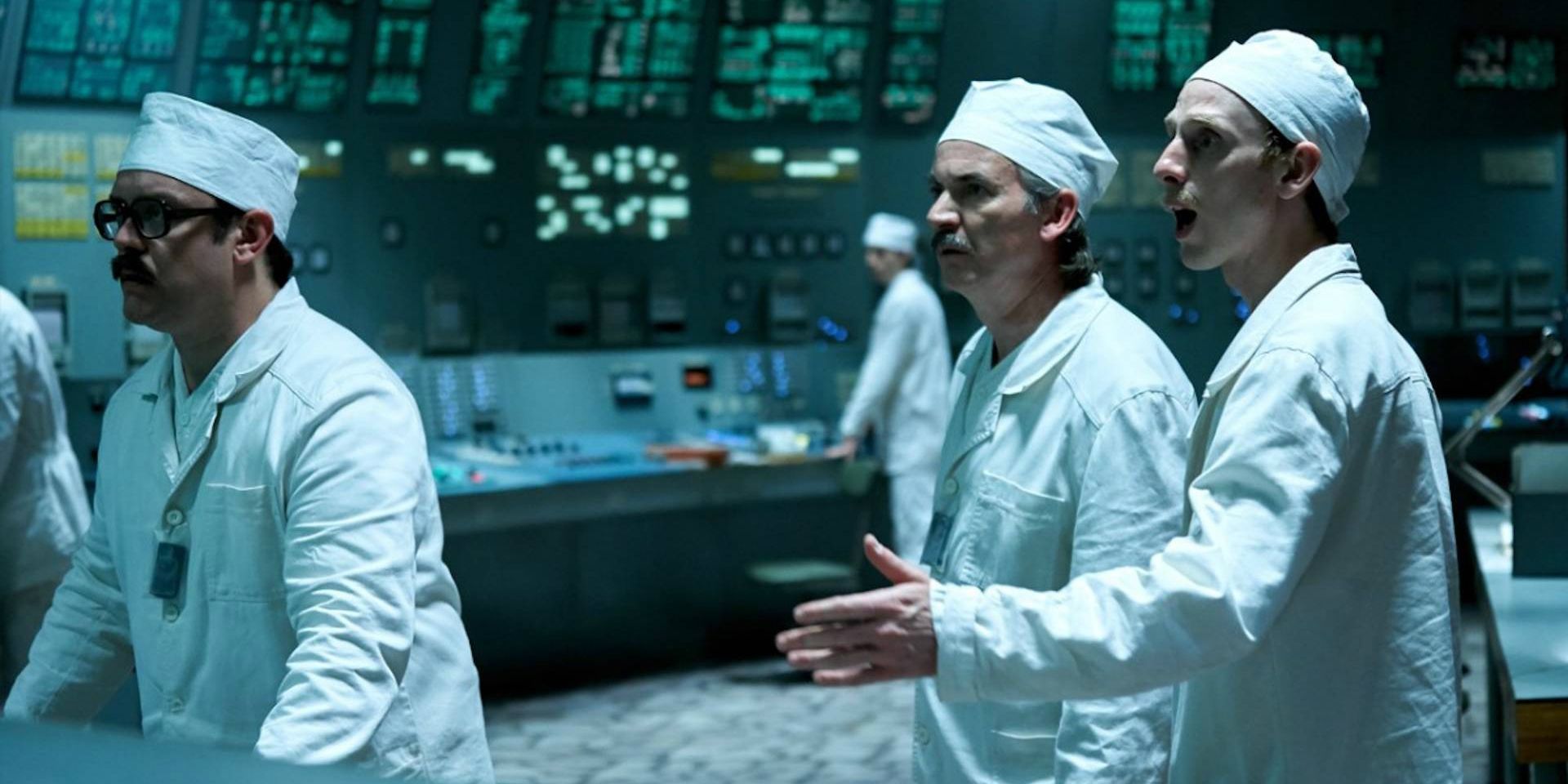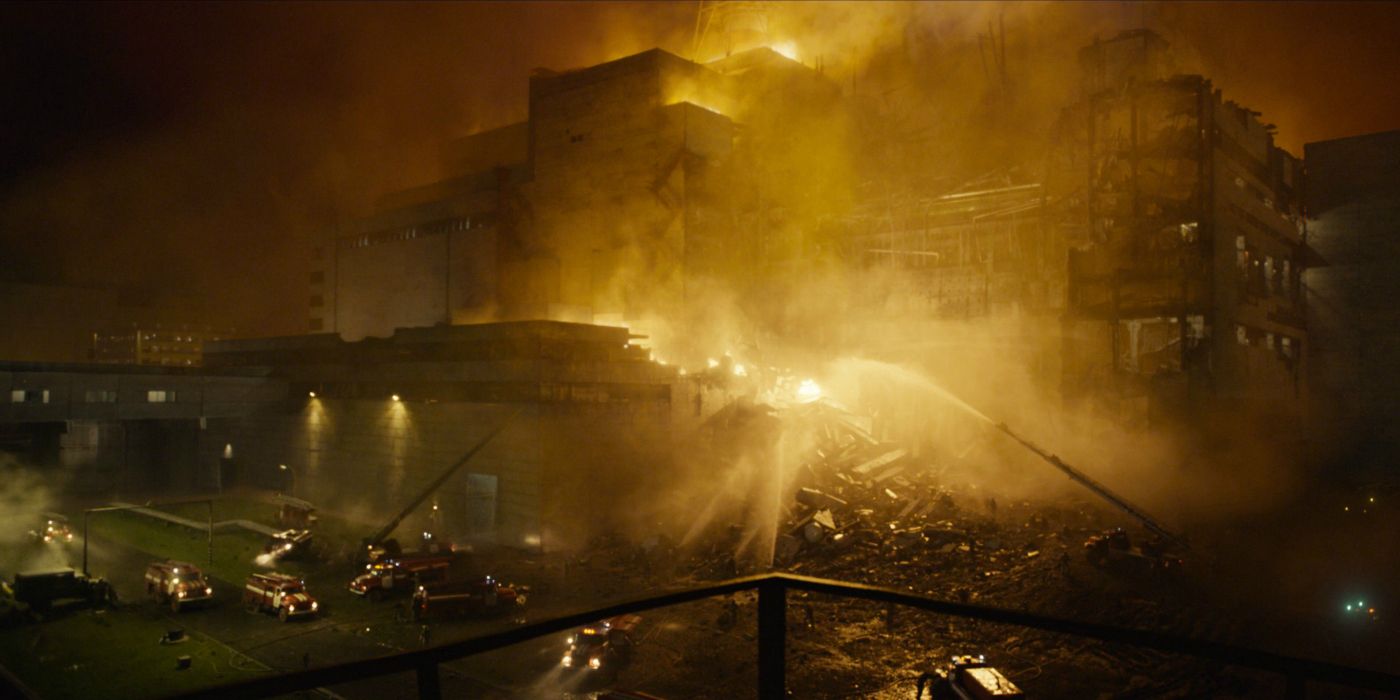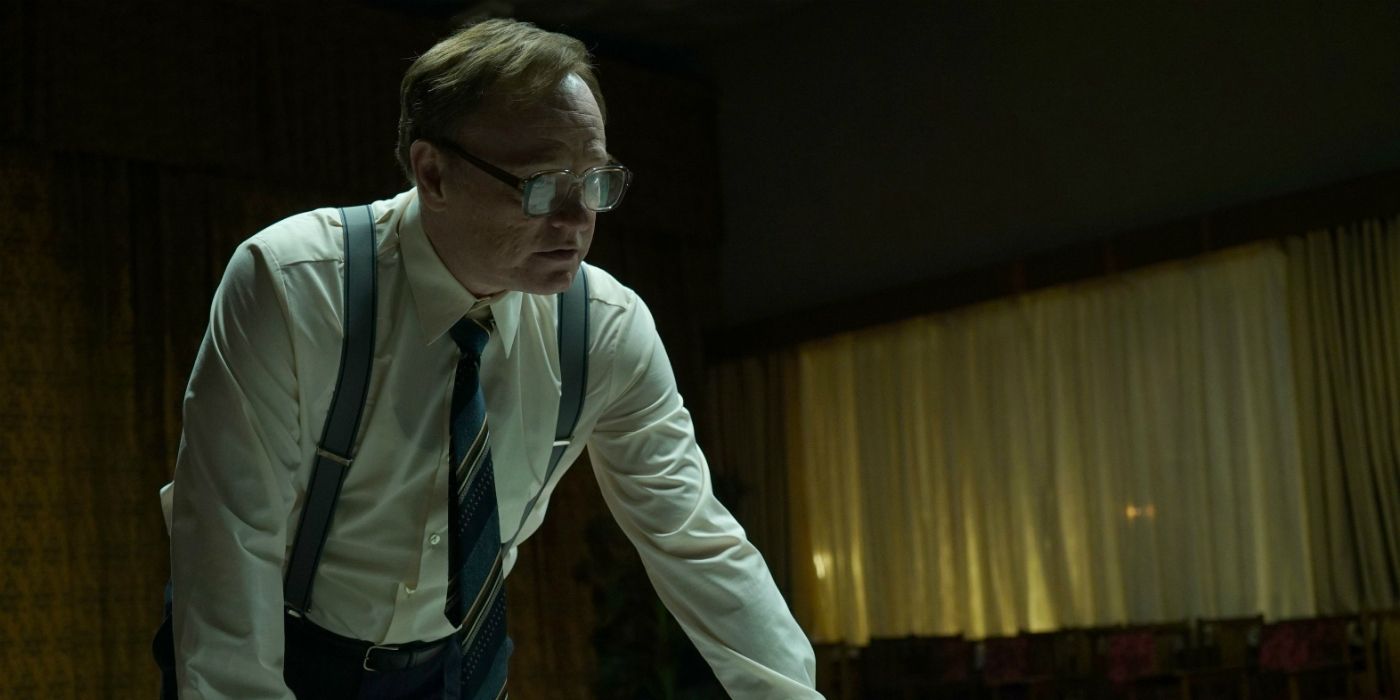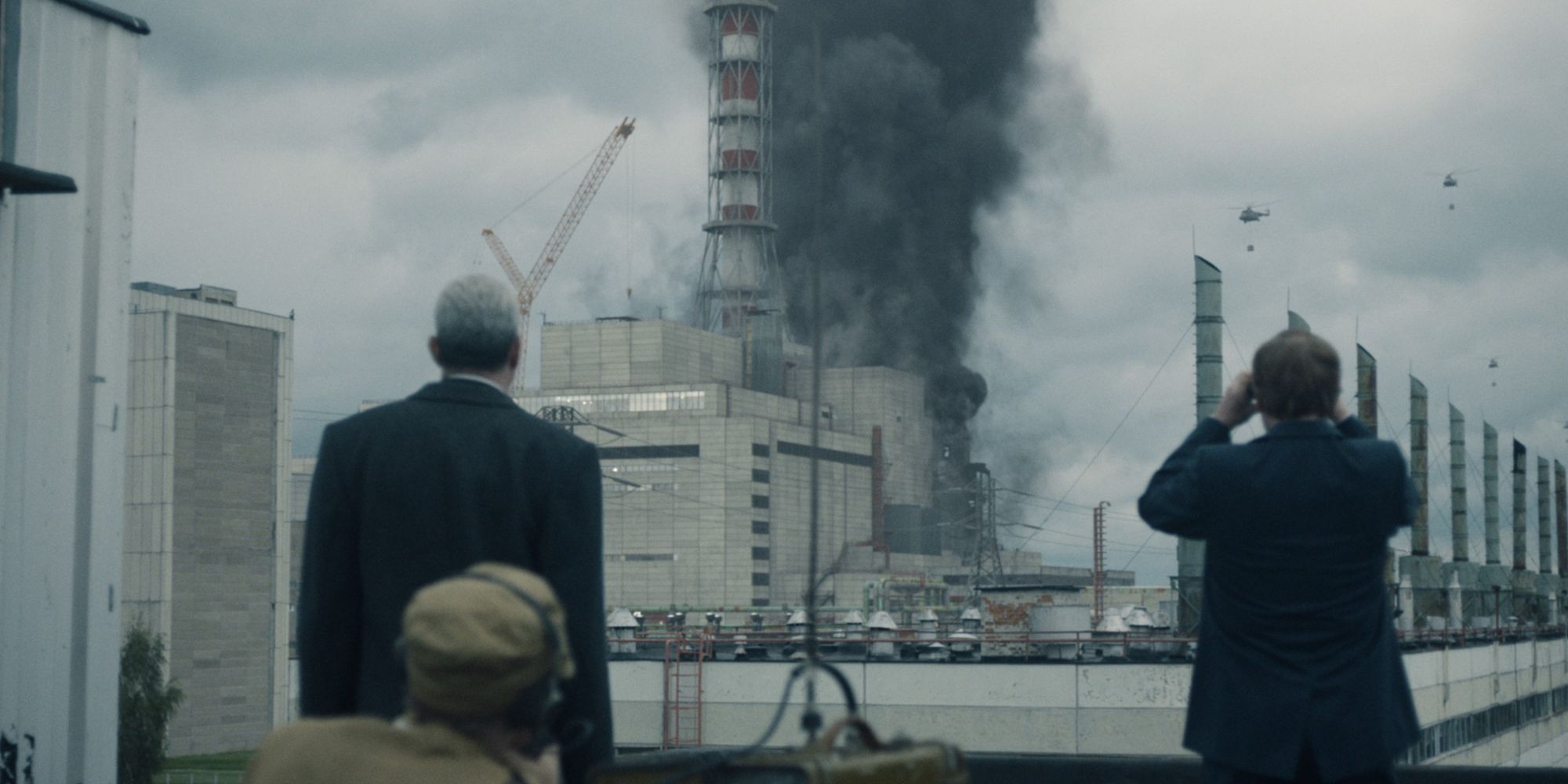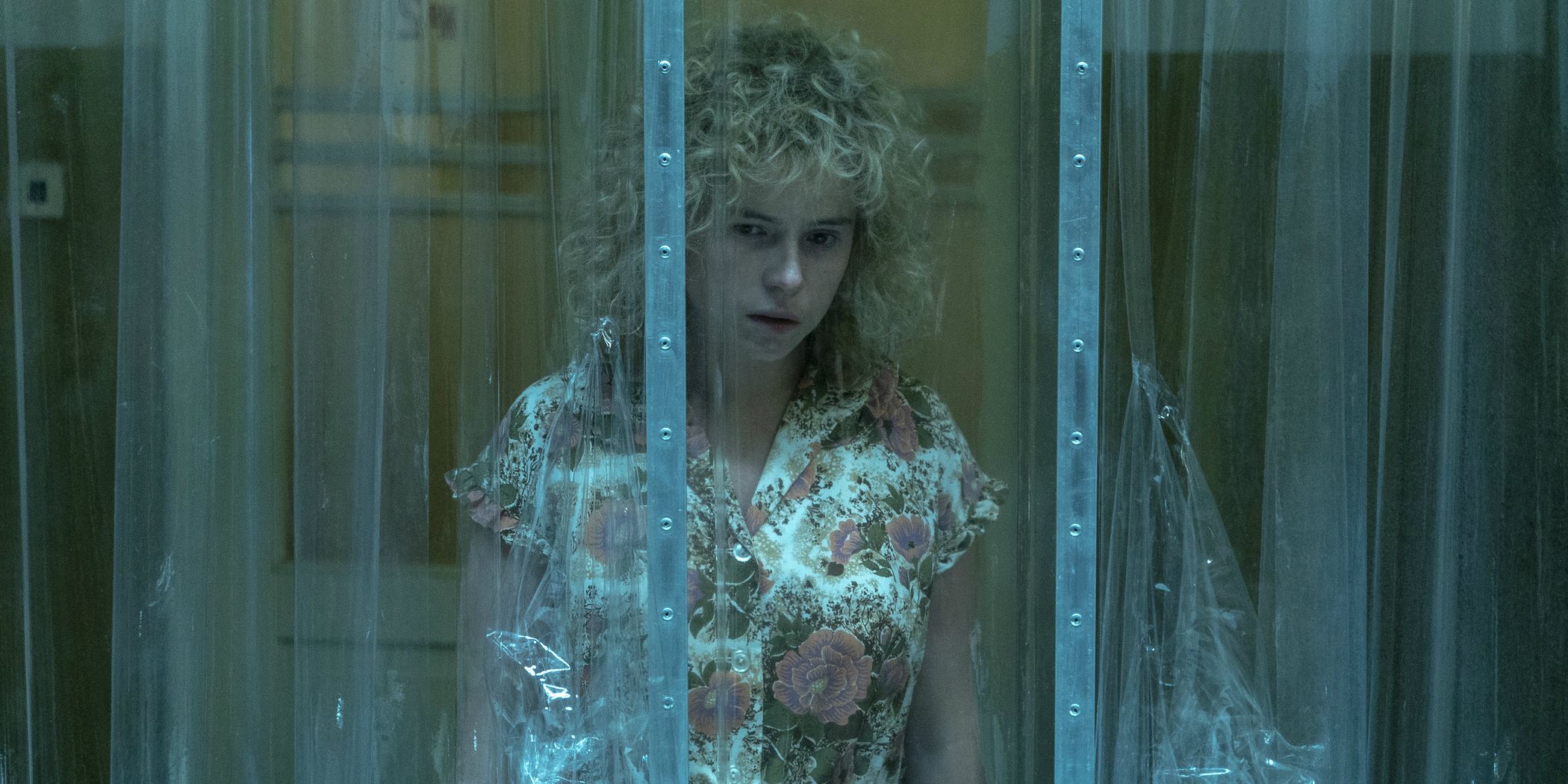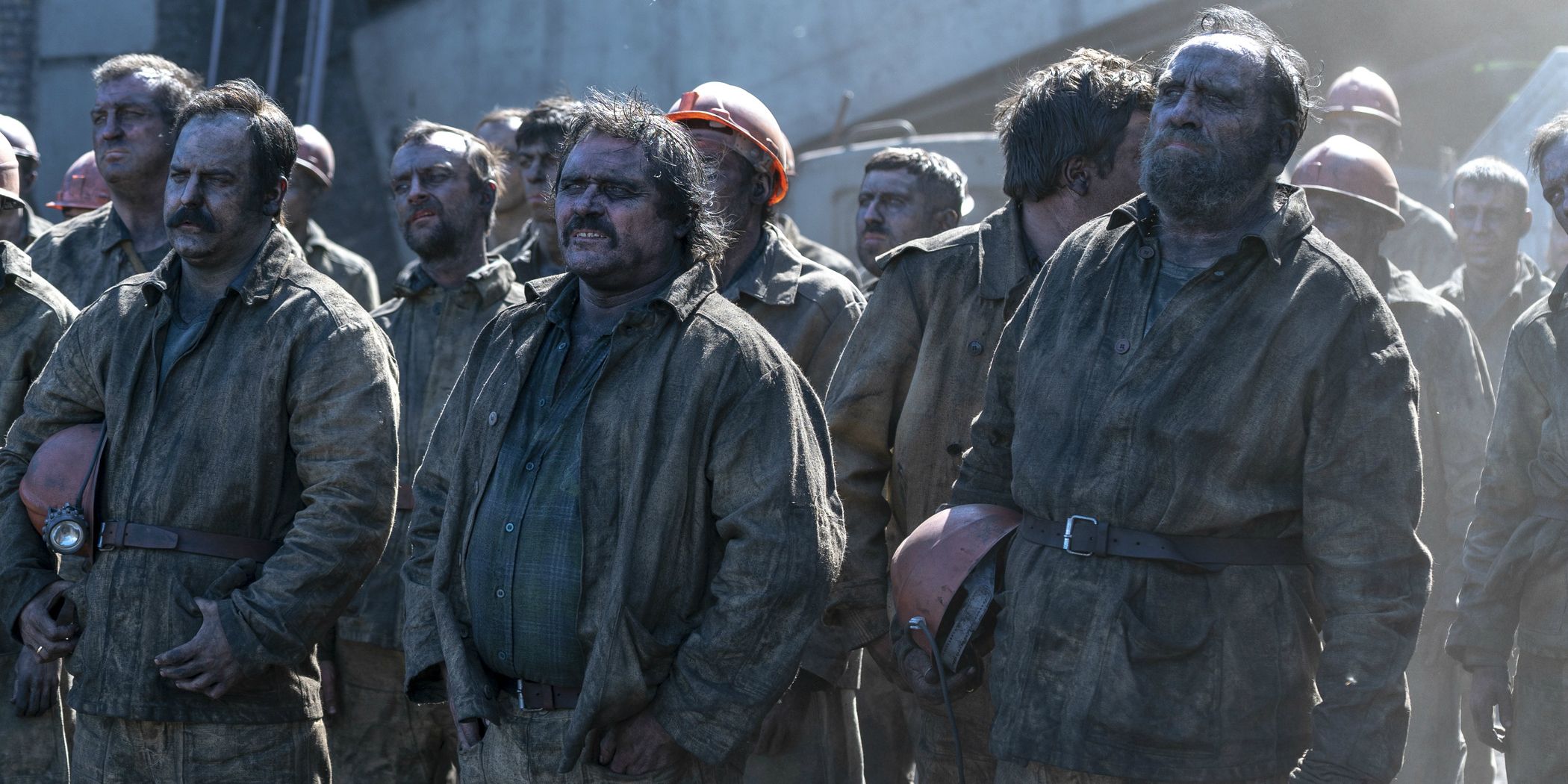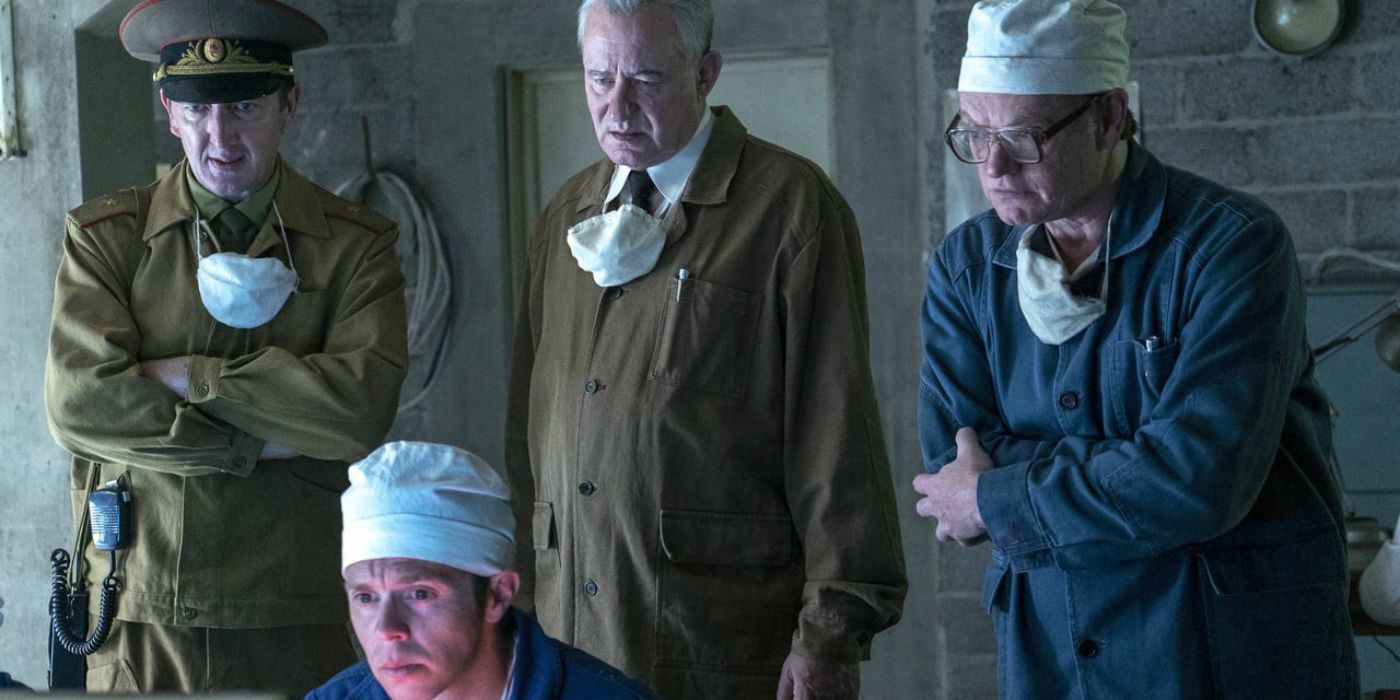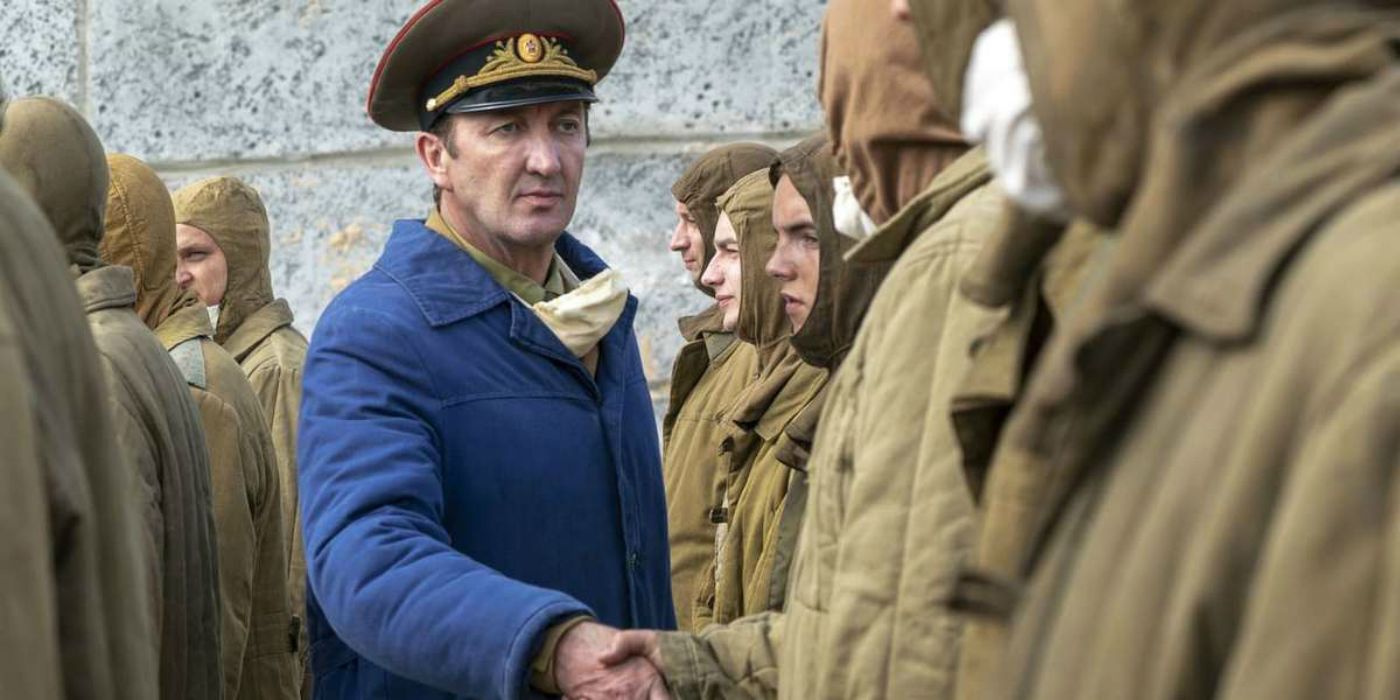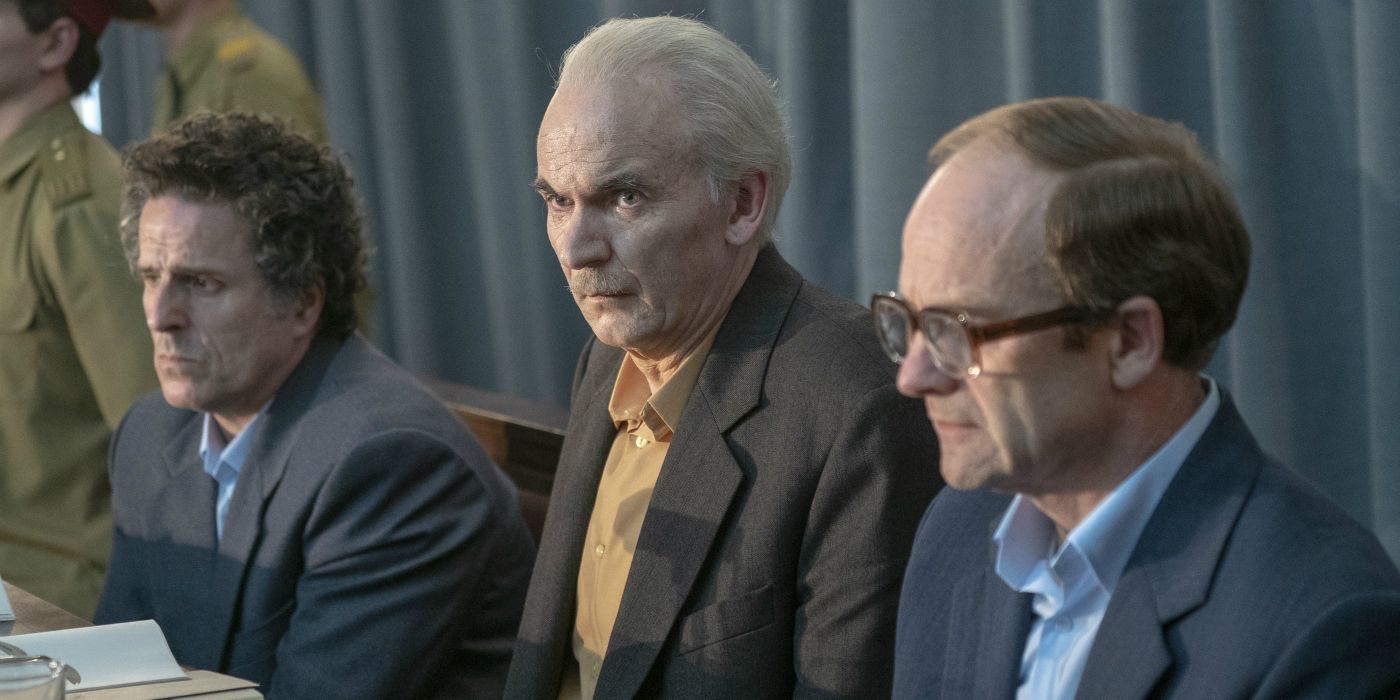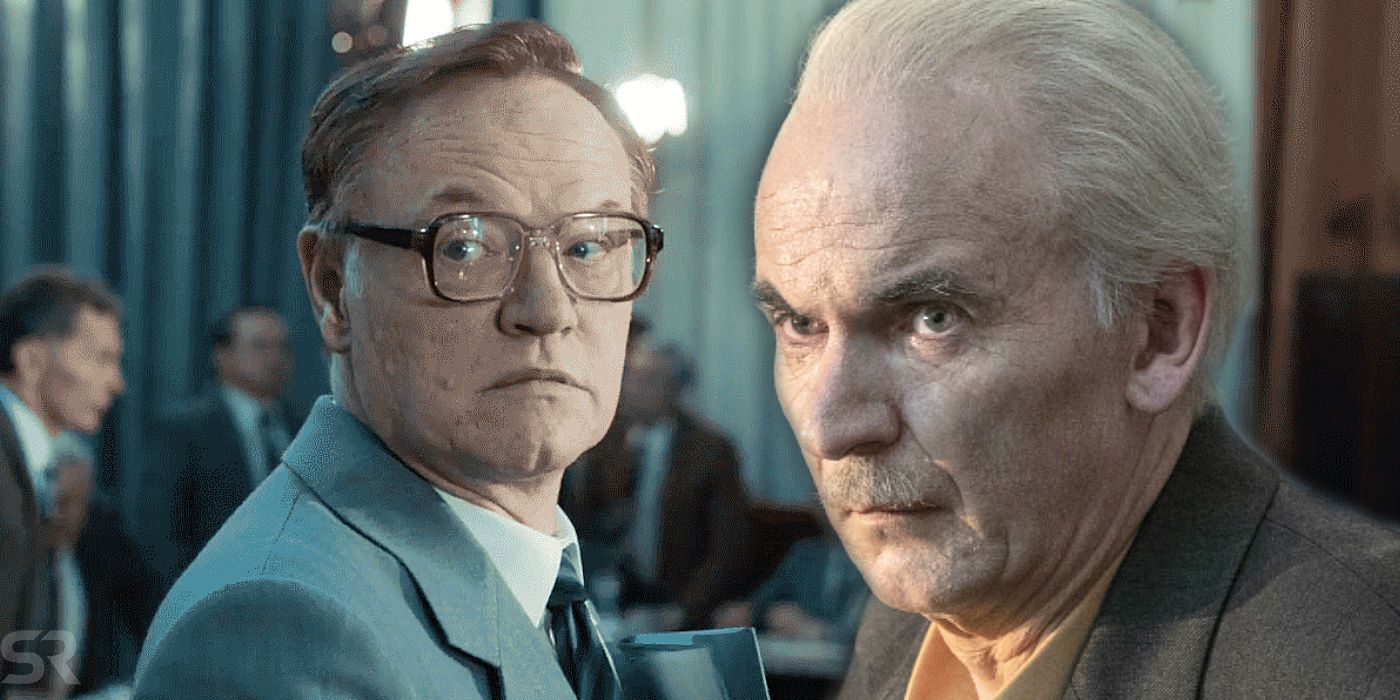Everyone knows of the Chernobyl nuclear disaster, but hardly anyone knows what actually happened, and series creator Craig Mazin hopes to tell the true story with his HBO miniseries, Chernobyl. The true story of Chernobyl is a complicated one, seeing as the Soviet Union initially attempted to withhold as much information as possible, even causing the delayed evacuation of nearby citizens - all of which is addressed in the Chernobyl miniseries. But there's more to the story, of course.
While HBO's Chernobyl certainly wasn't filmed at the Chernobyl site itself or in the neighboring city of Pripyat, it was shot in Lithuania and Ukraine and did utilize real structures that were built during the Soviet Union's reign. Furthermore, there are numerous aspects of the Chernobyl miniseries that viewers may call into questions, such as the choice not to use Russian accents, but everything from the ground-up was a conscious decision by the people involved with the project.
As for everything else - from the real and fake people portrayed in the miniseries to the down-to-the-minute events that saved Europe from widespread nuclear fallout - we break down the true story of the Chernobyl nuclear disaster and how close to reality the HBO miniseries gets.
Last updated: June 5, 2019
Chernobyl Episode 1, "1:23:45"
Episode 1's title is actually the timestamp on the clock - 1:23:45 am - when the core of reactor 4 exploded at Chernobyl. However, it's worth noting that the fire alarm wasn't activated until a few minutes later, at 1:26:03. Considering every second was crucial to mitigating the Chernobyl nuclear disaster, those few minutes may have been beneficial if things were handled differently.
HBO's Chernobyl begins with the introduction of Valery Legasov, the deputy director of the Kurchatov Institute of Atomic Energy. Legasov is shown recording tapes of the true account of what happened at Chernobyl - tapes that have been used to further understand the events that followed the fire - as a way to combat the failed cover-up by the Soviet Union. He then commits suicide in his home, two years to the day (but perhaps not to the minute) after reactor 4 exploded at Chernobyl. That is very much true. Eight years after his death and 10 years after the Chernobyl disaster happened, Legasov was awarded the title of Hero of the Russian Federation by Russian president Boris Yeltsin.
After Legasov hangs himself in episode 1, HBO's Chernobyl immediately switches over to the disaster itself beginning, with the explosion of reactor 4 and deputy chief-engineer Anatoly Dyatlov ordering everyone in the control room - all of whom were actually in the real-life control room when the accident happened, and some who died shortly afterward - to manage the situation. To them, or at least to Dyatlov, it was believed that one of the tanks had exploded, not the reactor itself, since that was considered impossible at the time. In that regard, Chernobyl stays incredibly accurate to detail, even using real dialogue recorded in the book, Voices of Chernobyl, by Svetlana Alexievich.
The two men who rushed into the control room to deliver the news of what happened actually did do that, and what they said, as well as the responses to what they said, are also true. Practically everything that the people from the control room did the night of the reactor's explosion was adapted into HBO's Chernobyl, but, unfortunately, some stories were left out of the miniseries since those accounts didn't directly affect the core story at hand. According to Mazin (via The Chernobyl Podcast), one such story is a worker who understood the reactor exploded, then chose to go home, take a nap, and return to work knowing that he'd most likely die.
A large portion of Chernobyl episode 1 focuses on figuring out exactly what happened. Everyone but a handful of engineers believed that the core of reactor 4 was still intact, and two of those people were in charge of immediately managing the situation: Viktor Bryukhanov (Con O'Neill) and Nikolai Fomin (Adrian Rawlins). Fomin ultimately ordered deputy chief operational engineer Anatoly Sitnikov (Jaime Sives) to observe the reactor hall from the roof. Although he initially refused, he did follow the orders and received a fatal dose of radiation because of it. Later, because of their malfeasance, Bryukhanov and Fomin were sentenced to 10 years in prison one year after the Chernobyl disaster. Fomin failed to commit suicide before his trial.
A side story that shows the effects of Chernobyl's nuclear disaster on the common people in Pripyat is the sad story of Vasily Ignatenko, a 25-year-old firefighter who responded to the fire alarm minutes after reactor 4 exploded. He represents all the first responders who were affected by the initial explosion.
Chernobyl Episode 2, "Please Remain Calm"
It's commonly believed that the local town of Pripyat was immediately evacuated following the Chernobyl fire, but that's actually not the case. As HBO's Chernobyl makes viewers painfully aware, Pripyat wasn't evacuated until approximately 36 hours after the disaster began. At that point, buses - as shown in the miniseries - arrived to take people away, but at that time, the citizens believed they were only being evacuated for a few days, not permanently. The message delivered to the people in Pripyat ended with, "Please keep calm and orderly in the process of this short-term evacuation." That's where the episode gets its title from.
Emily Watson first appears as Soviet nuclear physicist Ulana Khomyuk in Chernobyl's second episode, "Please Remain Calm", but Khomyuk is one of the few main characters in the miniseries to not be based on a real person. Instead, Khomyuk is an amalgamation of all the nuclear physicists and scientists who worked to mitigate the Chernobyl disaster. And Khomyuk's purpose in HBO's Chernobyl is to make sure the truth comes to light.
As Legasov mentions (thanks to Khomyuk in the miniseries), if the "lava" formed melted through the reactor floor and into the water below, it could create a significant steam explosion that would be detrimental to most of eastern Europe. So, three volunteers - engineers Alexei Ananenko and Valeri Bezpalov and shift supervisor Boris Baranov - went into the basement of Chernobyl and manually drained the bubbler pool. It was believed that this would be a suicide mission, and while reports from the '80s and '90s have suggested that all three men died shortly after they successfully drained the pool of water, more recent reports have indicated that they all survived. Ananenko and Bezpalov are reportedly still alive, while Baranov lived to 2005.
Meanwhile, with regards to the upper echelon, David Dencik portrays General Secretary Mikhail Gorbachev for the first time in "Please Remain Calm", and he even sports the former Soviet Union leader's notable birthmark. While it's unclear exactly what happened behind closed doors during the events of the Chernobyl disaster, Dencik plays Gorbachev as a man who's coming to terms with a failed cover-up as well as the true nature of the nuclear disaster. It's no secret that Chernobyl was a prime factor in Gorbachev's glasnost policy, eventually leading to the dissolution of the Soviet Union itself. In that regard, Dencik's portrayal is very much accurate, though still dramatized.
Lastly, another person introduced in Chernobyl episode 2, "Please Remain Calm", is Boris Shcherbina, who's played by Stellan Skarsgård. At first, Shcherbina is shown as being a pure bureaucrat but later comes to understand the true nature of the Chernobyl nuclear disaster. Unfortunately, very little is known about the real-life Shcherbina, but it is true that he oversaw Chernobyl's crisis management, which was a responsibility for being on the Council of Ministers. But as Legasov says in "Please Remain Calm", they would both be dead in five years. And that fact is, sadly, very true. Shcherbina died four years later.
Chernobyl Episode 3, "Open Wide, O Earth"
Beginning with the three engineers down below Chernobyl, viewers see them use dynamo torches to light their way to the valves, but in reality, it's believed that the engineers simply held onto the nearby pipes to guide them to their destination. After all, they knew the directions certain pipes would lead them in. But that doesn't work for television, so changes were made in order to allow audiences to see what was happening.
Then, throughout the episode, the people who were initially exposed to fatal doses of radiation - namely Leonid Toptunov and Aleksandr Akimov, as well as the first responders - are seen recovering from their immediate exposure at Chernobyl only to reverse course and die. As Legasov accurately points out to Shcherbina, those suffering from radiation sickness will recover for a short time, but then their bone marrow dies, the immune system fails, and their organs decompose, eventually leading to a point when pain killers wouldn't even help the patients. They ultimately die anywhere from 3 days to 3 weeks.
Lyudmilla Ignatenko's story is highlighted in Chernobyl episode 3, especially how she dealt with losing her husband, Vasily. Some aspects of Lyudmilla's story have been accurately translated onto screen, such as her bribing her way into the hospital and being allowed only 30 minutes to see her husband. However, while Lyudmilla in HBO's Chernobyl says she wasn't pregnant (something that she could hide from since she wasn't showing yet, as she really was pregnant), in real life, she told the nurse that she already had two children (via The Guardian).
At various points, Lyudmilla is shown touching and even hugging her husband, but the real-life Lyudmilla once said that the doctors wouldn't let them come near each other. Sadly, once Vasily had died, he was buried in formal wear but without shoes, since his feet were too swollen. That's why episode 3 of HBO's Chernobyl ends with Jessie Buckley's Lyudmilla holding a pair of shoes in her hands, at her husband's funeral.
Another part of episode 3 was gathering miners from nearby areas to start a tunnel underneath Unit C so the Chernobyl Commission could install a heat exchanger under reactor 4, thereby mitigating the chances of the molten core reaching the water below the concrete pad. Miners were really brought in from places such as Tula and Donbass to dig the tunnel as well as excavate a room under the concrete pad big enough for the heat exchanger. However, HBO's Chernobyl changes some aspects of what actually happened in 1986.
While Skarsgard's Shcherbina requests all of the liquid nitrogen in the Soviet Union - which would have been used to cool the "lava" should it have broken through the concrete pad - it was Bryukhanov who was ordered to find all of that liquid nitrogen in reality. Otherwise, he would have been shot for his failure. (This was prior to him and Fomin being arrested.) While all of this happened because there was a chance that the molten core would reach the water table, it was ultimately unnecessary because it never - to this day - melted through the concrete pad. This is something that Jared Harris' Legasov addresses towards the end of episode 3, but it still needed to be done because no one knew what could really happen next.
Of the approximately 400 miners who dug the tunnel underneath Unit 3, it's estimated that one-in-four of them have since died from cancer or some radiation-related health complications. Interestingly, HBO's Chernobyl shows the lengths the miners went through to dig the tunnel, even stripping naked to withstand the intense heat, and while there are conflicting reports of how naked the miners were, several of them have said that they were completely naked at times.
One thing that was addressed in episode 3, albeit briefly, is the Chernobyl exclusion zone. As mentioned by Shcherbina while on the phone with Gorbachev, Nikolai Ryzhkov determined that 30 km around the Chernobyl Power Plant would be evacuated. It was an arbitrary number, something that Legasov points out. That really was the initial exclusion zone, and it was a rather useless decision according to Legasov. Today, the Chernobyl exclusion zone encompasses 2,600 square km.
Chernobyl Episode 4, "The Happiness of All Mankind"
We mostly see the clean-up phase in Chernobyl episode 4. Unfortunately, the machines weren't enough to remove the radioactive debris, and so, the military resorted to using soldiers to shovel the debris off the roofs. As Legasov mentions in the Chernobyl miniseries, the soldiers were referred to as "biorobots" - and they were part of the Chernobyl liquidators, people who were responsible for dealing with the aftermath of the disaster (from civilians to police to the reactor operators themselves).
In addition to the 3,828 biorobots who were tasked with cleaning up the rooftop of the Chernobyl power plant, tens of thousands of soldiers and civilians were stationed within the Chernobyl exclusion zone (represented by Barry Keoghan and Fares Fares' characters), and they were given daily tasks to perform, from razing the surrounding forest to the ground to even killing animals that received fatal doses of radiation. This phase wasn't completed right away, as it took months and years.
Another hot topic in Chernobyl episode 4 is determining what really happened. Of course, the HBO miniseries continues to use Emily Watson's Ulana Khomyuk to represent the process in uncovering the truth, despite her character being a fictional one. However, the pushback that she receives in the episode is very much real. In the end, the real-life Legasov ultimately delivered a report to the International Atomic Energy Agency that accounted for many of the safety violations and recklessness that was mentioned in "The Happiness of All Mankind". The IAEA's International Nuclear Safety Advisor Group investigated the causes and issue their own report, INSAG-1, which chronicled everything leading up to the disaster.
Whether someone pushed Legasov to speak candidly about the RBMK reactors is unclear, but he did exude unprecedented candor on behalf of the Soviet Union at the conferences in Vienna (via European Energy Forum). Regrettably, his efforts to prevent such a disaster from happening again, especially by revealing key details to the public, Legasov was ridiculed by his peers and his country. He was rejected for the Hero of Socialist Labor award following the Chernobyl disaster, despite everyone else on the commission having received the award. He was also denied a seat on the scientific and technical council at Kurachatov Institute of Atomic Energy.
Continuing the story of Vasily and Lyudmilla Ignatenko, Chernobyl episode 4 briefly shows Lyudmilla's pregnancy over the course of several months, ultimately leading up to the baby's birth. Sadly, as revealed in "The Happiness of All Mankind", Lyudmilla gave birth to a baby girl, named Natashenka, who died passed away four hours from cirrhosis of the liver and congenital heart disease (via The Star). However, unlike what happens in HBO's Chernobyl, Lyudmilla had gone into labor while visiting Vasily at the cemetery.
Chernobyl Episode 5, "Vichnaya Pamyat"
The final episode of HBO's Chernobyl has two main focuses: the Chernobyl trial and the reactor 4 accident itself, both of which are told simultaneously. Beginning with Dyatlov, Fomin, and Bryuhkanov approximately 12 hours before the accident, it's implied that if the test is successful, they would be promoted, which was the impetus for Dyatlov's recklessness. While it's possible that promotions were involved, it was really the system - a system built upon cheap materials, lies, and compliant workers - that ultimately led to the Chernobyl nuclear disaster.
Legasov admits in HBO's Chernobyl that his report in Vienna was a lie. While that's true to an extent, much of what he summarized at the IAEA was, in fact, the truth - but also to an extent. The real-life Legasov did admit to issues with the staff on-site, as well as with the training and safety regulations. At the time, the world believed him. However, it appeared that Legasov's candor was authentic but veiled. He withheld essential information from the world because that was what he was ordered to do, and it wasn't until his tapes came out that at least a significant portion of the truth became known.
But the thing is, Legasov didn't tell a courtroom of KGB officers, judges, and members of the Soviet scientific community that his report in Vienna was a lie, because he was never at the Chernobyl trial (which did take place inside the House of Cultures in the city of Chernobyl). While HBO's miniseries is incredibly accurate to detail in many ways, the trial in episode 5 is something that was heavily dramatized due to the fact that none of the three main characters were in that room. Legasov and Shcherbina weren't there, and Khomyuk is a fictional character created for the show. Furthermore, the trial itself was immensely condensed, from weeks to what appears to be one day.
However, other aspects of the Chernobyl trial, such as the design of the makeshift courtroom - including the box and in which order the defendants were sitting in - is identical to what the actual courtroom looked like. It was a show trial, through and through, and one controlled by the Central Committee. It just turns out that it was one of the last show trials in the history of the Soviet Union before its dissolution a few years later.
Overall, the Chernobyl trial on HBO's TV show is meant to convey to viewers what actually happened the night of the accident, and from our research as well as what series creator Craig Mazin has said on The Chernobyl Podcast, everything, from the dialogue to the times in which certain events occurred, are as accurate as they can possibly be (without having actually been in the control room on that fateful night). For instance, A key moment in the control room, during episode 5, happens when Dyatlov threatens the workers' careers, which forced them to continue with the test, despite the reactor dropping to 30 megawatts. According to reports, Toptunov suggested they shut down the reactor after it stalled, and Akimov backed Toptunov's request, but it was Dyatlov who disregarded their protest and ordered that the test proceed.
In HBO's Chernobyl, Dyatlov, Fomin, and Bryuhkanov are shown on trial, but in reality, there were three other men who were also on trial at the time: senior engineer and inspector, Yuri A. Laushkin; shift director of reactor 4, Boris V. Rogozhin, and the chief of reactor 4, Aleksandr P. Kovalenko. While the main three each received 10-year sentences, though they all were released long before their sentences were completed, the other three - Laushkin, Kovalenko, Rogozhin - received much shorter sentences. They were given two, three, and five-year prison sentences, respectively. According to the NY Times, Fomin is the only person who was charged with abuse of power in addition to criminal negligence.

